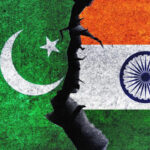The visit would come in the aftermath of the most serious border crisis between the neighbours in decades.
China’s President Xi Jinping may travel to India in the second half of this year to attend the BRICS (Brazil, Russia, India, China, South Africa) leaders’ meeting, if the summit goes ahead in person as is increasingly expected.
The visit would come in the aftermath of the most serious border crisis between the neighbours in decades.
China on Monday expressed its “support” for India hosting this year’s meeting, and said the meet would not be impacted by the border crisis.
“We support India in hosting this year’s meeting,” Foreign Ministry spokesperson Wang Wenbin said. “We will work with India and other members to strengthen communication and dialogue, and consolidate the three-pillar cooperation,” referring to economic cooperation, political and security cooperation, and people-to-people and cultural exchanges.
Expectations are that by the second half of the year, the summit will not have to be held virtually. While the COVID-19 situation will determine whether that is the case, other major summits in Europe and the United Kingdom are likely to take place this summer, before the BRICS meet.
Prime Minister Narendra Modi is expected to make his first overseas trip after the pandemic to Bangladesh in March, and is also expected to attend the India-EU meet in Portugal in May and the G7 summit in the U.K. the following month, where India has been invited as a guest country. Preliminary discussions on a date for the BRICS summit were held during Foreign Secretary Harsh Vardhan Shringla’s recent visit to Moscow.
Mr. Wang, the Foreign Ministry spokesperson in Beijing, expressed China’s support to India hosting the meet in response to a question on whether the border crisis would impact the summit.
“In recent years, BRICS has seen greater solidarity, deeper practical cooperation, and greater influence,” he said. “It is now a positive, stable and constructive force in international affairs. China attaches importance to this mechanism and we are committed to deepening strategic partnership within it to consolidate solidarity and cooperation.”
China also was in favour of working with the grouping to “expand BRICS-plus cooperation and work for greater progress under BRICS, and help the world to defeat COVID-19, resume economic growth and improve global governance,” he added.
In 2017, Prime Minister Modi travelled to China to attend a BRICS summit five days after Indian and Chinese troops ended a 72-day stand-off on the Doklam plateau. The timing of the summit then, officials in India and China said at the time, pushed both sides to arrive at a deal to end the stand-off.
Four years on, however, the border crisis is of a far greater magnitude, having led to the biggest violence on the India-China border since 1967, the first loss of life since 1975, and a major rupture in the relationship. Also unlike Doklam, the border crisis has not been limited to one spot and has involved the deployment of thousands of troops and armoured elements.
While disengagement is currently underway along the Line of Actual Control (LAC) in eastern Ladakh, having been completed last week at Pangong Lake and now in progress in other areas, de-escalation is yet to take place, with thousands of troops on both sides still present in depth areas beyond the LAC and yet to return to their peacetime positions.
Chinese President Xi Jinping may visit India for BRICS summit
The visit would come in the aftermath of the most serious border crisis between the neighbours in decades.
China’s President Xi Jinping may travel to India in the second half of this year to attend the BRICS (Brazil, Russia, India, China, South Africa) leaders’ meeting, if the summit goes ahead in person as is increasingly expected.
The visit would come in the aftermath of the most serious border crisis between the neighbours in decades.
China on Monday expressed its “support” for India hosting this year’s meeting, and said the meet would not be impacted by the border crisis.
“We support India in hosting this year’s meeting,” Foreign Ministry spokesperson Wang Wenbin said. “We will work with India and other members to strengthen communication and dialogue, and consolidate the three-pillar cooperation,” referring to economic cooperation, political and security cooperation, and people-to-people and cultural exchanges.
Expectations are that by the second half of the year, the summit will not have to be held virtually. While the COVID-19 situation will determine whether that is the case, other major summits in Europe and the United Kingdom are likely to take place this summer, before the BRICS meet.
Prime Minister Narendra Modi is expected to make his first overseas trip after the pandemic to Bangladesh in March, and is also expected to attend the India-EU meet in Portugal in May and the G7 summit in the U.K. the following month, where India has been invited as a guest country. Preliminary discussions on a date for the BRICS summit were held during Foreign Secretary Harsh Vardhan Shringla’s recent visit to Moscow.
Mr. Wang, the Foreign Ministry spokesperson in Beijing, expressed China’s support to India hosting the meet in response to a question on whether the border crisis would impact the summit.
“In recent years, BRICS has seen greater solidarity, deeper practical cooperation, and greater influence,” he said. “It is now a positive, stable and constructive force in international affairs. China attaches importance to this mechanism and we are committed to deepening strategic partnership within it to consolidate solidarity and cooperation.”
China also was in favour of working with the grouping to “expand BRICS-plus cooperation and work for greater progress under BRICS, and help the world to defeat COVID-19, resume economic growth and improve global governance,” he added.
In 2017, Prime Minister Modi travelled to China to attend a BRICS summit five days after Indian and Chinese troops ended a 72-day stand-off on the Doklam plateau. The timing of the summit then, officials in India and China said at the time, pushed both sides to arrive at a deal to end the stand-off.
Four years on, however, the border crisis is of a far greater magnitude, having led to the biggest violence on the India-China border since 1967, the first loss of life since 1975, and a major rupture in the relationship. Also unlike Doklam, the border crisis has not been limited to one spot and has involved the deployment of thousands of troops and armoured elements.
While disengagement is currently underway along the Line of Actual Control (LAC) in eastern Ladakh, having been completed last week at Pangong Lake and now in progress in other areas, de-escalation is yet to take place, with thousands of troops on both sides still present in depth areas beyond the LAC and yet to return to their peacetime positions.






NO COMMENT